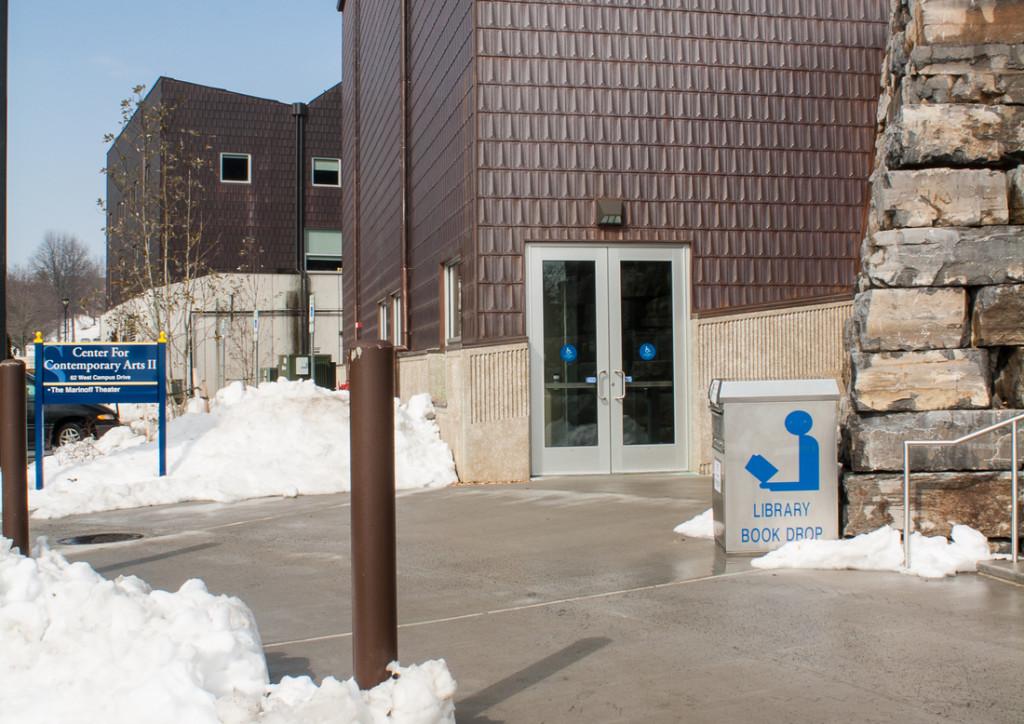Students often complain about not being able to find parking in the lot of their choice, but students using the Center for Contemporary Arts Phase II building have a new complaint. The front-facing handicap access door on the Phase II building has occasionally been left locked and has experienced technical difficulties this semester, preventing students from utilizing the closest street-level door.
The door is most often locked in the early mornings. Erin Malley, a senior photography major, stated, “I haven’t really had trouble with using the door, but I also don’t have morning classes.”
Rachel Smith, a freshman business major, said that “last semester the door would occasionally be locked around 10:30 am, even on nice days.” According to Malley, there has been an improvement this semester, especially with the effort that is expended by facilities in dealing with the challenges of snow in addition to regular duties.
While it would certainly be possible for students with a handicap to go to the Phase I building, take the uphill ramp on the left side of the building around to the second level where the next handicap accessible doors are located, and then take the elevator downstairs into the Phase II building, the new route proves more challenging, lengthy and time consuming. The sometimes locked, lower-level door may make it more difficult for students who are already experiencing mobility challenges to get to class.
According to the safety committee policy/procedure statement, Shepherd University is “committed to maintaining a safe and healthy work environment” for all employees and users of campus facilities. Each employee is “empowered to act and is expected to respond to unsafe conditions by reporting their observations and/or taking appropriate corrective measures in keeping with university safety procedures and industry practice.” In layman’s terms, Shepherd expects its employees to keep an eye out for safety issues, which they either report or, if it agrees with procedures to do so, fix the problem themselves.
Rhonda Smith, the chair of the department of contemporary art, noticed the door was locked several times throughout the spring semester: “I feel certain it is more a matter of change among employees, and many may just not be aware of the door or the need to unlock it. I believe everyone is attempting to ‘remember’ and keep this door accessible.”
Smith called facilities at least three times and spoke with Donna Shipley, the manager of custodial and administrative services, who responded that someone would take care of the problem.
Smith placed two work orders for the door as well. The first work order, placed Jan. 24, noted that the cleaning lady was unable to unlock the button that operated the door, which students arriving at the circle drop-off in front of the building would expect to be able to use. The button operated correctly on Feb. 10 and 12, but it did not open the door on Feb. 11 in the middle of the afternoon.
The second work order, placed Feb. 11, stated that as of 8 a.m. that day, none of the doors of the Center for Contemporary Arts Phase II had been unlocked, making it difficult to teach classes when the doors to the facility were not routinely unlocked. Larissa Saunders, a freshman photography major, stated that the door is “usually locked in the mornings sporadically, especially if there is a delay or bad weather.”
Smith does not want individuals who are already tasked with more to do than usual because of the weather to get into trouble, and she believes the door needs to be open because it is the only means of entry into the building from the street level for a person with a handicap.
Shipley was out of the office and unavailable for comment regarding the Center for Contemporary Art Phase II building’s handicap access.

